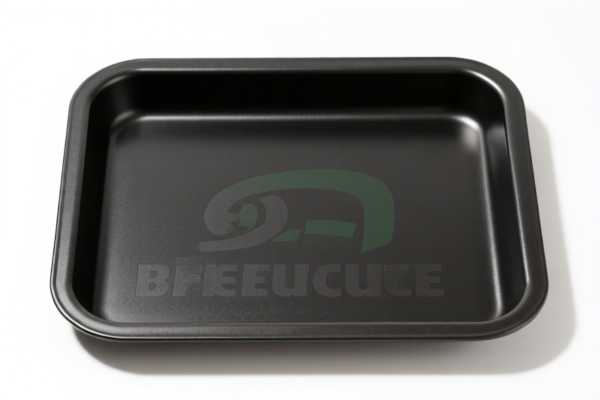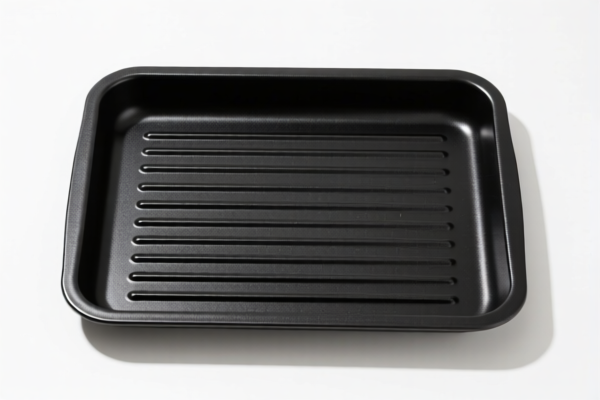| HS Code | Official Doc | Tariff Rate | Origin | Destination | Effective Date |
|---|---|---|---|---|---|
| 7321190040 | Doc | 55.0% | CN | US | 2025-05-12 |
| 7321890050 | Doc | 62.5% | CN | US | 2025-05-12 |
| 7326908688 | Doc | 82.9% | CN | US | 2025-05-12 |
| 8301406060 | Doc | 43.2% | CN | US | 2025-05-12 |
| 8306100000 | Doc | 35.8% | CN | US | 2025-05-12 |
| 8306100000 | Doc | 35.8% | CN | US | 2025-05-12 |
| 9503000090 | Doc | 30.0% | CN | US | 2025-05-12 |
| 9503000071 | Doc | 30.0% | CN | US | 2025-05-12 |




BBQ Trays
BBQ trays, also known as barbecue trays or grill pans, are vessels designed to facilitate cooking food over direct heat sources, typically charcoal, gas, or electric grills. They serve as a convenient and often disposable surface for grilling, offering benefits in terms of ease of cleaning and portability.
Material
BBQ trays are manufactured from a variety of materials, each offering distinct characteristics:
- Aluminum Foil: The most common and economical option. Lightweight, disposable, and readily available. Suitable for single-use applications and smaller food items. Prone to tearing with heavier weights.
- Aluminum: More durable than foil, reusable (though can warp with repeated use), and provides more even heat distribution. Often features raised edges to contain juices.
- Stainless Steel: The most durable and reusable option. Resistant to rust and corrosion, offering long-term value. Provides excellent heat distribution and is suitable for all types of grilling. Can be more expensive.
- Cast Iron: Less common for disposable trays but available as grill pans. Retains heat exceptionally well, ideal for searing and achieving a crispy finish. Requires seasoning and careful maintenance.
- Galvanized Steel: A less expensive alternative to stainless steel, but can potentially leach zinc into food if the coating is damaged. Not recommended for frequent use.
Purpose
The primary purpose of BBQ trays is to simplify the grilling process. They are used for:
- Cooking Smaller Food Items: Ideal for grilling items that might fall through grill grates, such as shrimp, vegetables, diced meats, and marinated foods.
- Marinating: Trays can be used to marinate food directly, reducing the need for separate containers and minimizing cleanup.
- Portion Control: Facilitate individual servings or controlled portions of food.
- Containment: Prevent sauces, marinades, and juices from dripping onto the grill, reducing flare-ups and simplifying cleaning.
- Disposal: Disposable trays eliminate the need for scrubbing and washing, particularly useful for large gatherings or camping.
Function
BBQ trays function by:
- Conducting Heat: Materials like aluminum and stainless steel efficiently transfer heat from the heat source to the food.
- Creating a Barrier: The tray prevents direct contact between the food and the grill grates, preventing sticking and facilitating easier removal.
- Containing Liquids: Raised edges prevent juices and marinades from spilling, maintaining moisture and preventing flare-ups.
- Even Heat Distribution: Higher quality materials and designs promote more even cooking.
Usage Scenarios
- Backyard Barbecues: Convenient for grilling a variety of foods for family and friends.
- Camping & Picnics: Lightweight and disposable options are ideal for outdoor cooking.
- Tailgating: Simplify cooking and cleanup at sporting events.
- Large Gatherings: Reduce cleanup time and facilitate portion control.
- Indoor Grilling: Some trays are designed for use with indoor grills or ovens.
Common Types
- Disposable Aluminum Foil Trays: Single-use, lightweight, and economical. Available in various sizes and shapes.
- Reusable Aluminum Trays: More durable than foil, with raised edges.
- Stainless Steel Grill Pans: Durable, reusable, and provide excellent heat distribution. Often feature perforations for draining.
- Cast Iron Grill Pans: Heavy-duty, retain heat exceptionally well, and ideal for searing.
- Non-Stick Grill Pans: Coated with a non-stick surface for easy food release and cleaning.
- Perforated Trays: Feature holes to allow fat and juices to drain, promoting healthier cooking and preventing splattering.
- Woven Trays: Constructed from woven aluminum or stainless steel, offering increased strength and stability.
BBQ trays fall under the category of stoves, ranges, grates, cookers, barbecues, braziers, gas rings, plate warmers and similar nonelectric domestic appliances, and parts thereof, of iron or steel. Here are the relevant HS codes based on the provided reference material:
- 7321.19.0040: This HS code covers stoves, ranges, grates, cookers (including those with subsidiary boilers for central heating), barbecues, braziers, gas rings, plate warmers and similar nonelectric domestic appliances, and parts thereof, of iron or steel. Specifically, it applies to cooking appliances and plate warmers that are 'Other', including appliances for solid fuel and are Portable. The total tax rate is 55.0%, comprised of a 0.0% base tariff, a 0.0% additional tariff, and a 30.0% additional tariff applicable after April 2, 2025, plus a 25% additional tariff on steel and aluminum products.
- 7321.89.0050: This HS code also covers stoves, ranges, grates, cookers (including those with subsidiary boilers for central heating), barbecues, braziers, gas rings, plate warmers and similar nonelectric domestic appliances, and parts thereof, of iron or steel. However, it applies to 'Other appliances' that are 'Other', including appliances for solid fuel. The total tax rate is 62.5%, comprised of a 0.0% base tariff, a 7.5% additional tariff, and a 30.0% additional tariff applicable after April 2, 2025, plus a 25% additional tariff on steel and aluminum products.
Regarding these HS codes, please note that the applicable tariff rates are subject to change, particularly after April 2, 2025, with the introduction of additional tariffs on steel and aluminum products. It is important to verify the material composition of the BBQ trays to determine if the 25% additional tariff applies.
Customer Reviews
No reviews yet.